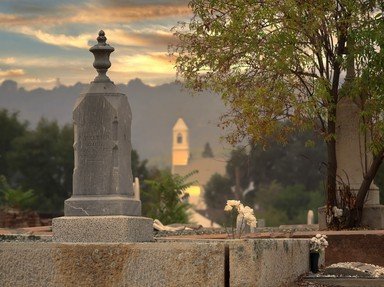Quiz Answer Key and Fun Facts
1. In Buddhism, what is the lowest circle of rebirth?
2. In Roman Catholicism, there are two kinds of sin: mortal and venial. Which kind of sin would, unless it was repented before dying, land the individual in Hell?
3. How many different types of hell are there in Jainism?
4. According to ancient Greek belief, what is the name of the afterlife where the wicked received fitting punishments for their evil deeds on Earth?
5. In Islam, Jahannam is often depicted as a fiery pit in which the condemned are repeatedly burned by the flames. However, there is one particular area of Jahannam, Zamhareer, which contains something completely different. What would await evildoers in Zamhareer?
6. In Chinese mythology, the afterlife is a maze with eighteen different levels, in which various sinners are punished for their misdeeds on Earth. What is the name of this afterlife?
7. Drujo-Demana, the Zoroastrian equivalent of Hell, is described in the writings of Arda Viraf as a place of torture. In order to get there, the dead must first cross a bridge, where they will be judged by three angels. For the righteous, the bridge is wide and the crossing is easy, but for the wicked, the bridge becomes as sharp as razors and tosses them into hell. What is the name of the bridge?
8. In which Scandinavian country's mythology is the realm of the dead known as Tuonela?
9. Xibalba ('place of fear'), the Hell of Mayan mythology, contains six houses containing various traps and dangers to test the dead, from the Dark House (a house filled with complete darkness) to the Hot House (which was filled with fire). The third house is filled with vicious jaguars, and the fourth house also contains animals - but which?
10. In Asatru (Norse/Germanic pagan) mythology, Hel is the final resting place for the souls of the very wicked.
Source: Author
Kankurette
This quiz was reviewed by FunTrivia editor
LeoDaVinci before going online.
Any errors found in FunTrivia content are routinely corrected through our feedback system.
